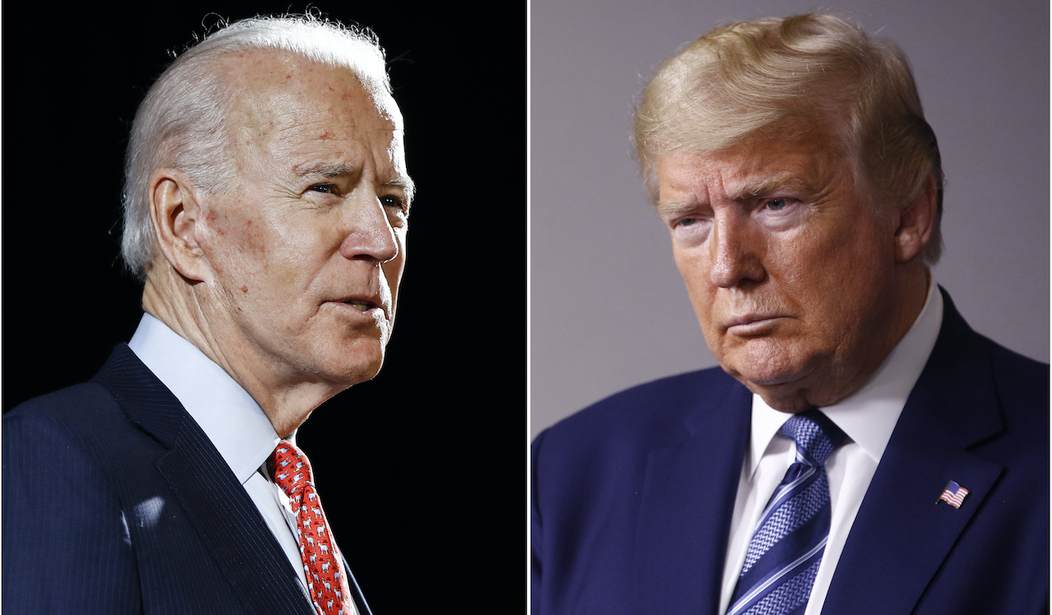Editor's Note: This column was co-authored by Allen West.
Former New York Democrat Senator Daniel Patrick Moynihan once quipped, “you are entitled to your own opinions, but not your own facts". This statement is especially true of this very contentious presidential election cycle. Therefore, we offer a series of objective articles, not political diatribes that stand as a factual comparative analysis of the two primary presidential candidates, who have a record to assess. This first article examines their job performance with respect to the issues of inflation, job creation, taxation and the national debt.
Inflation
Under the Trump administration (January 2017-2021), inflation increased by 7.72% or 1.93% per year, according to US Bureau of Labor Statistics CPI data. Comparatively, inflation increased 17.9% or 5.97% per year, during President Biden’s first three years in office. Through February 2024, overall US inflation has increased 18.63%, and counting. This over 40-year high inflation has increased the cost of key staples dramatically. The 30-year fixed mortgage interest rate nationally was 2.65% and a gallon of gasoline was $2.39 when Biden took office and today the 30-year fixed mortgage interest rate is 6.88% according to Bankrate, and the average price of a gallon of gasoline nationally is $3.54, according to AAA.
Job Creation
When President Trump took office on January 20, 2017 the United States had 150.53 million Americans working and an unemployment rate of 4.7%, according to the US Bureau of Labor Statistics monthly Situation Report. By the end of February 2020, the US economy realized impressive job growth with 158.02 million Americans working and an unemployment rate of 3.6%. In President Trump’s first 37 months in office, roughly 7.49 million jobs were created, and unemployment declined 1.1%. However, COVID-19 hit the US and global economies hard: 24.62 million US jobs were lost in just two months, driving Americans employed down to 133.4 million and unemployment up to 14.8% by the end of April 2020. The pandemic’s economic collapse measured by US GDP saw -5.3% in Q1 2020, and -28% in Q2 2020. Despite the pandemic, government intervention and the resilience of the American Competitive Free Enterprise System fueled an incredible rebound in the second half of 2020 realizing near record GDP growth of 34.8% in Q3 and 4.2% in Q4, with 16.43 million US jobs recovered by December 2020, along with the unemployment rate declining to 6.7%.
Recommended
When President Biden took office on January 20, 2021, the US unemployment rate was 6.4% with just over 150 million Americans employed. Through February 2024, the post-pandemic unemployment rate declined to 3.9%, with 160.97 million Americans working. This is a net increase of 2.21 million Americans employed above the February 2020 pre-pandemic number. How Americans judge the quality of their current job, the pandemic, whether President Trump reacted too slow and spent too much or whether President Biden spent too much while handcuffing the American economy with regulations will certainly be a causal factor in how many Americans vote relative to jobs this November.
Tax Policy
President Biden was quoted in the June 17, 2023, issue of Barrons as saying “it’s about time the super wealthy start paying their fair share of personal income taxes” while addressing a Pennsylvania group of AFL/CIO workers. Biden went on to note the number of US billionaires has climbed above 1,000 while paying on average only 8% in federal income taxes. “They paid a lower tax rate than schoolteachers, than firefighters, probably anyone in this room. It’s time they paid a minimum tax. I don’t mind them being billionaires. Just pay your fair share, man.” Biden recently called for a 25% minimum tax on billionaires in his fiscal 2025 budget.
On February 13, 2024, the National Taxpayers Union Foundation released their annual policy paper on who pays taxes. In the report titled, Who Pays Income Taxes: Tax Year 2021, Damian Brady makes a compelling case that rich people do pay their fair share in taxes. In fact, the preliminary data from the National Taxpayers Union points out that the top 1 percent of income earners had adjusted gross income of $680,000 or above, earned 26.3% of all adjusted gross income in 2021 and paid 45.8% of all federal personal income taxes. They also had the highest tax rate to adjusted gross income of 1.74. The report states the top 50% of US income earners made almost $47,000 or above in adjusted gross personal income. That top 50% earned 89.6% of the income, paid 97.66% of all the taxes and had a ratio of personal income tax paid to adjusted gross income of 1.09. What is perhaps most notable is the bottom 50% earned $46,637 or less, for 10.4% of adjusted gross income, paid only 2.34% of federal personal income taxes and had a ratio of personal income taxes paid to adjusted gross income of 0.22.
It is also important to consider in 1980, the top 1% paid 19.3% of personal income taxes, with the highest marginal tax rate being 70%. In 2021, the top 1% paid 45.8% of total federal income taxes while the top marginal federal income tax rate was 37%.
President Trump’s Tax Cuts and Jobs Act (TCJA) passed in fiscal year 2017 with federal tax receipts being $3.31 trillion that year. As a result of the TCJA, federal income tax revenue increased to $4.89 trillion by fiscal year 2022; an increase in revenue of 47.73% according to the US Congressional Budget Office. Research based on IRS data by Justin Haskins in the December 21, 2021 issue of The Hill indicates middle and working-class Americans benefited most from the TCJA. The TCJA will expire in 2025 if not extended.
Finally, Washington Post fact checker Glenn Kessler challenged the President’s rate of 8% in the January 23, 2024 edition, of The Washington Post noting billionaires pay almost 24% of their income in federal income taxes, based on the most current IRS data available.
Tax rates will clearly be an issue in the upcoming elections.
Our National Debt
In 1981, our $988 billion US national debt was 31.1% of our then $3.21 trillion US Gross Domestic Product (GDP). Through March 2024, our national debt stands at $34.6 trillion or 122% of our current estimated GDP of $28.36 trillion. Since 1981, US GDP rose 882%, while our national debt grew by 3,502% - about four times faster than GDP.
These numbers should terrify every American.
Without a change in spending patterns, the national debt will reach almost $50 trillion by 2034, with social security and the highway trust fund unable to meet their financial obligations according to the US Office of Management and Budget and the US Treasury Department. Some estimate that by 2054, the US national debt will surpass $144 trillion, or about $1 million per household.
The US national debt of $34.6 trillion represents an increase of roughly $6.7 billion, and counting, during President Biden’s term. Using the same methodology, the US national debt increased roughly $8.4 trillion during the Trump administration to a total of about $27.9 trillion when President Biden took office.
Conclusion
When assessing Trump and Biden on these key issues there is a glaring point to be made: The American people, not politicos, have a perception that economic issues were better under the former president than they are with the current one. However, neither candidate can rest on their laurels (real or spin). They both must demonstrate how to be accountable and learn from past mistakes, especially as these relate to deficit spending and debt increases.
Dr. Timothy G. Nash is director of the McNair Center at Northwood University. U.S. Army, Lt. Col. (Ret.) Allen B. West is the executive director of the American Constitutional Rights Union, an Army combat veteran and former member of the U.S. Congress.























Join the conversation as a VIP Member